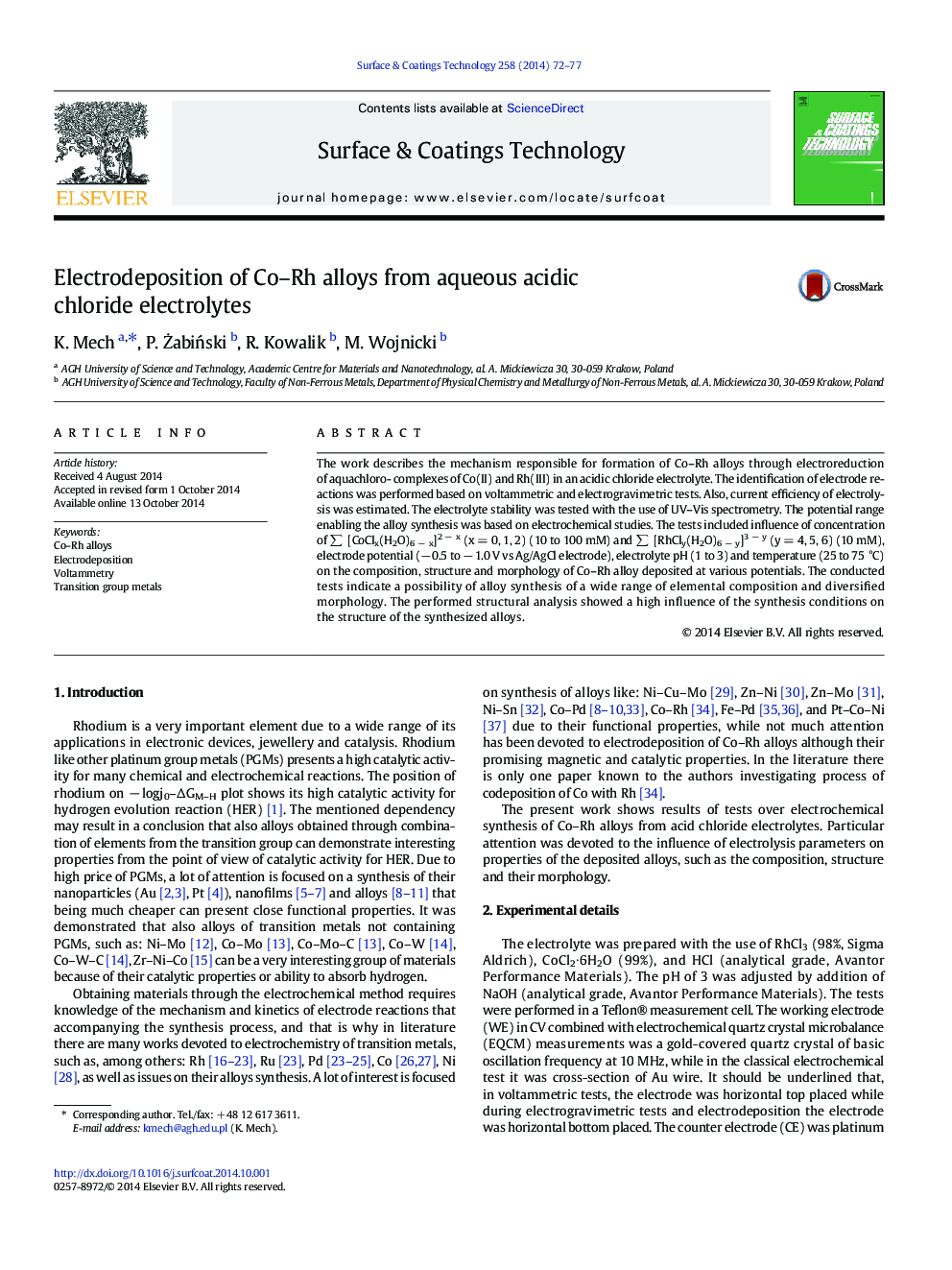| Article ID | Journal | Published Year | Pages | File Type |
|---|---|---|---|---|
| 8027148 | Surface and Coatings Technology | 2014 | 6 Pages |
Abstract
The work describes the mechanism responsible for formation of Co-Rh alloys through electroreduction of aquachloro- complexes of Co(II) and Rh(III) in an acidic chloride electrolyte. The identification of electrode reactions was performed based on voltammetric and electrogravimetric tests. Also, current efficiency of electrolysis was estimated. The electrolyte stability was tested with the use of UV-Vis spectrometry. The potential range enabling the alloy synthesis was based on electrochemical studies. The tests included influence of concentration of â [CoClx(H2O)6 â x]2 â x (x = 0, 1, 2) (10 to 100 mM) and â [RhCly(H2O)6 â y]3 â y (y = 4, 5, 6) (10 mM), electrode potential (â 0.5 to â 1.0 V vs Ag/AgCl electrode), electrolyte pH (1 to 3) and temperature (25 to 75 °C) on the composition, structure and morphology of Co-Rh alloy deposited at various potentials. The conducted tests indicate a possibility of alloy synthesis of a wide range of elemental composition and diversified morphology. The performed structural analysis showed a high influence of the synthesis conditions on the structure of the synthesized alloys.
Keywords
Related Topics
Physical Sciences and Engineering
Materials Science
Nanotechnology
Authors
K. Mech, P. Å»abiÅski, R. Kowalik, M. Wojnicki,
